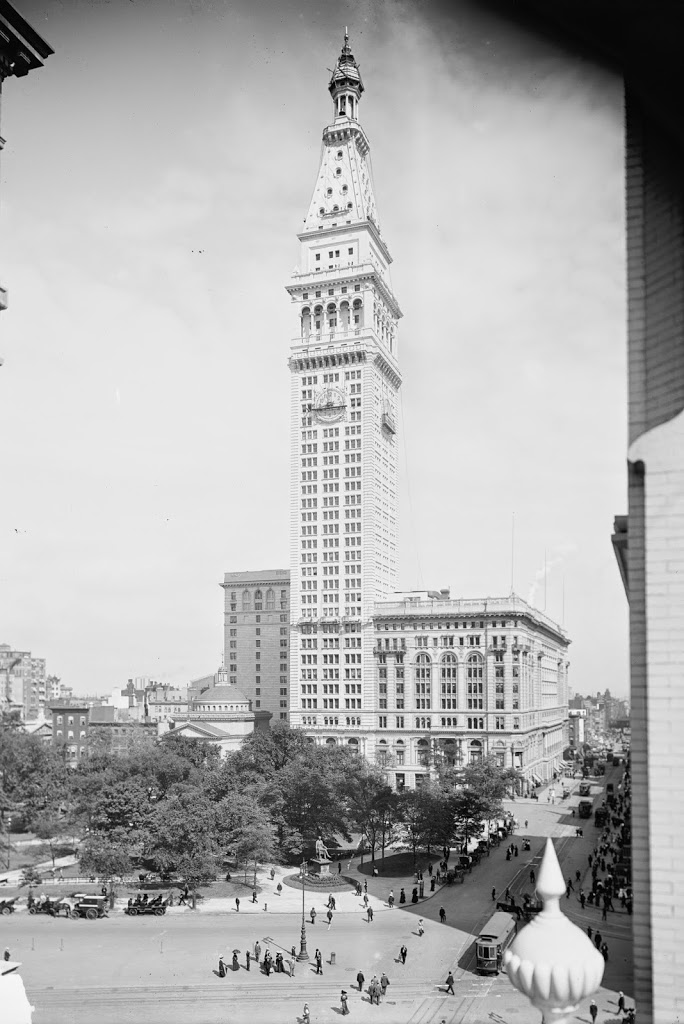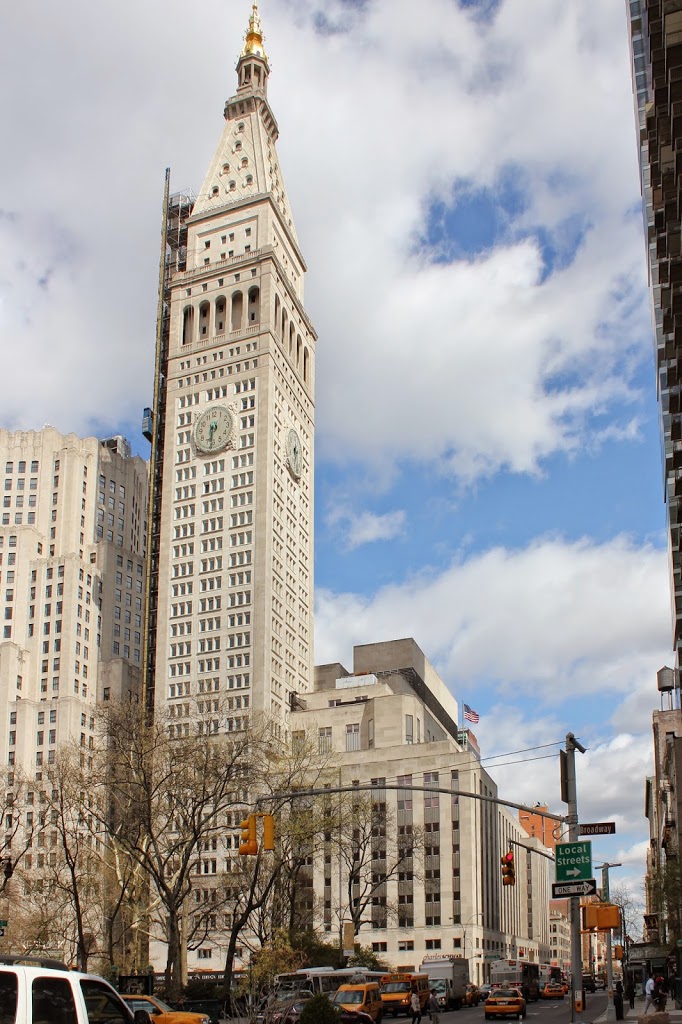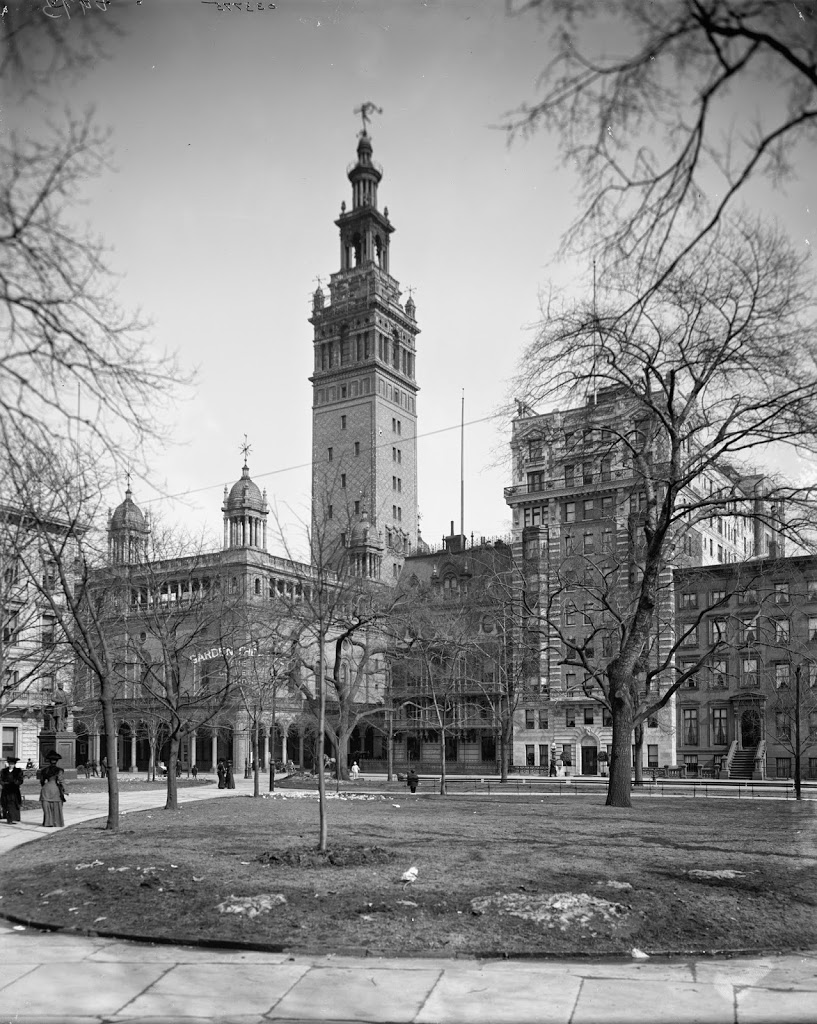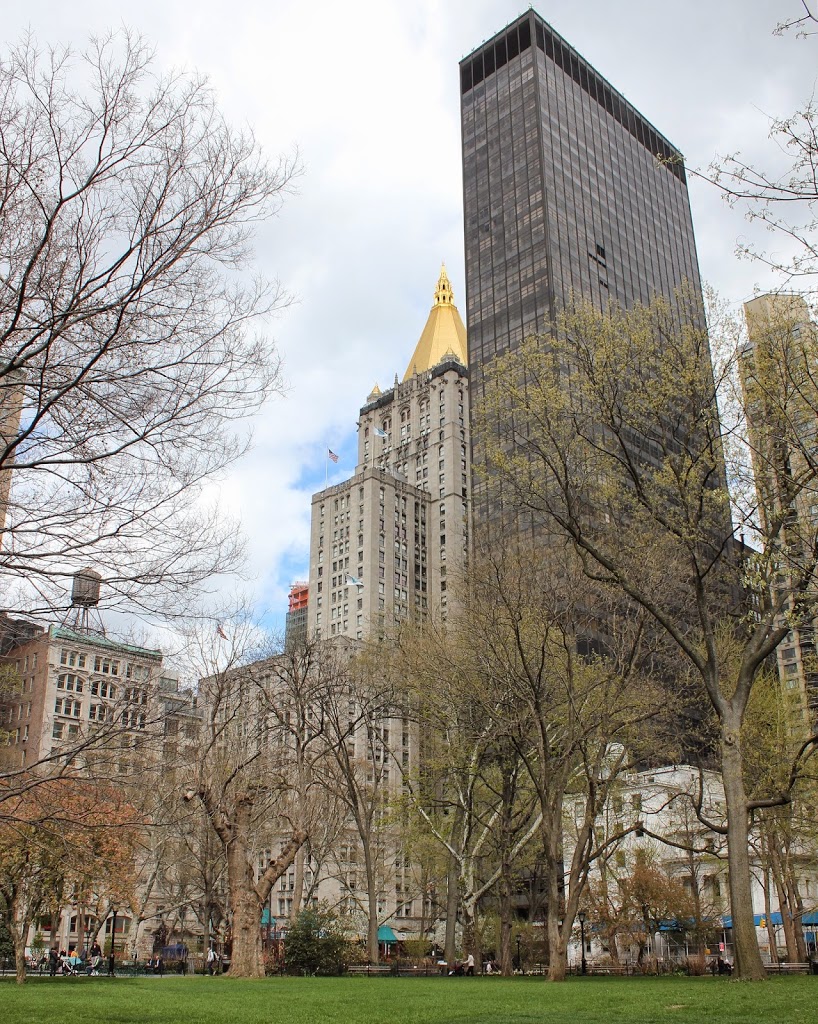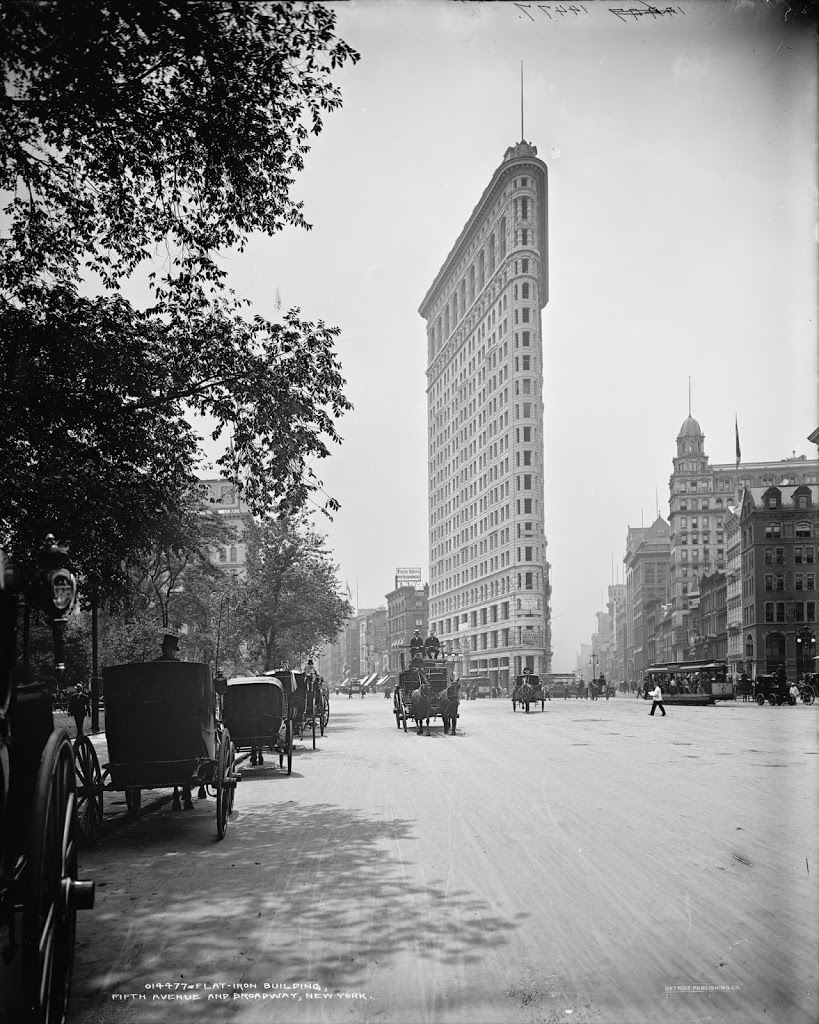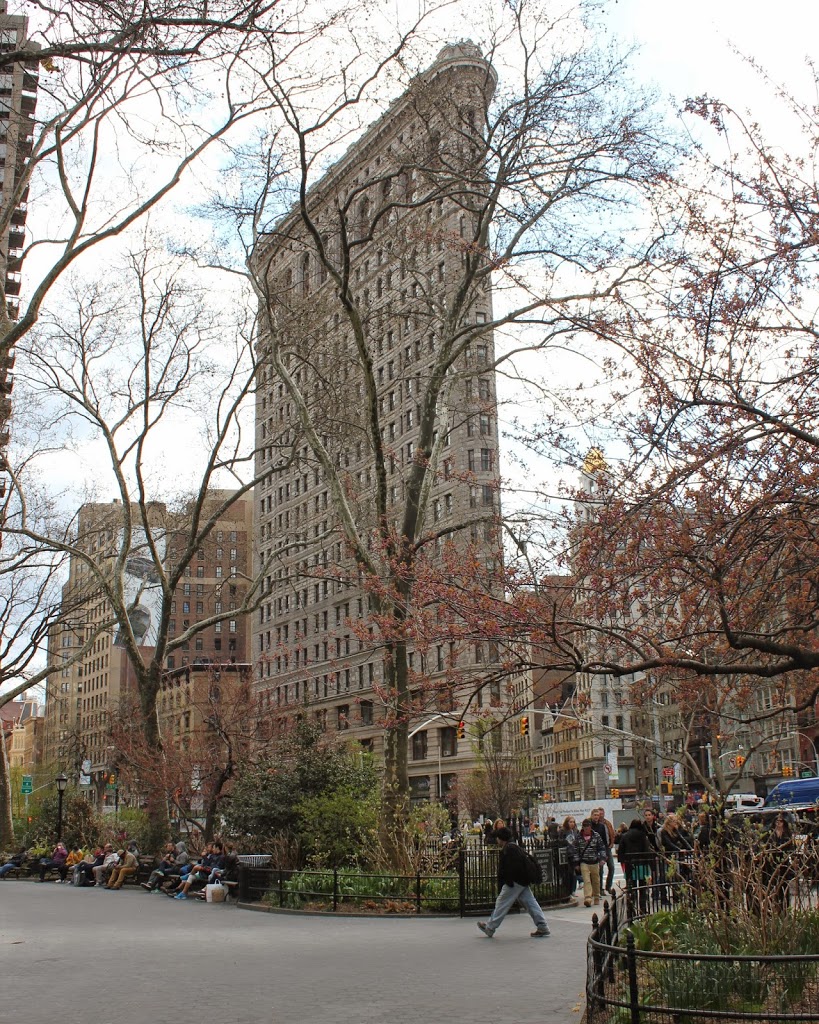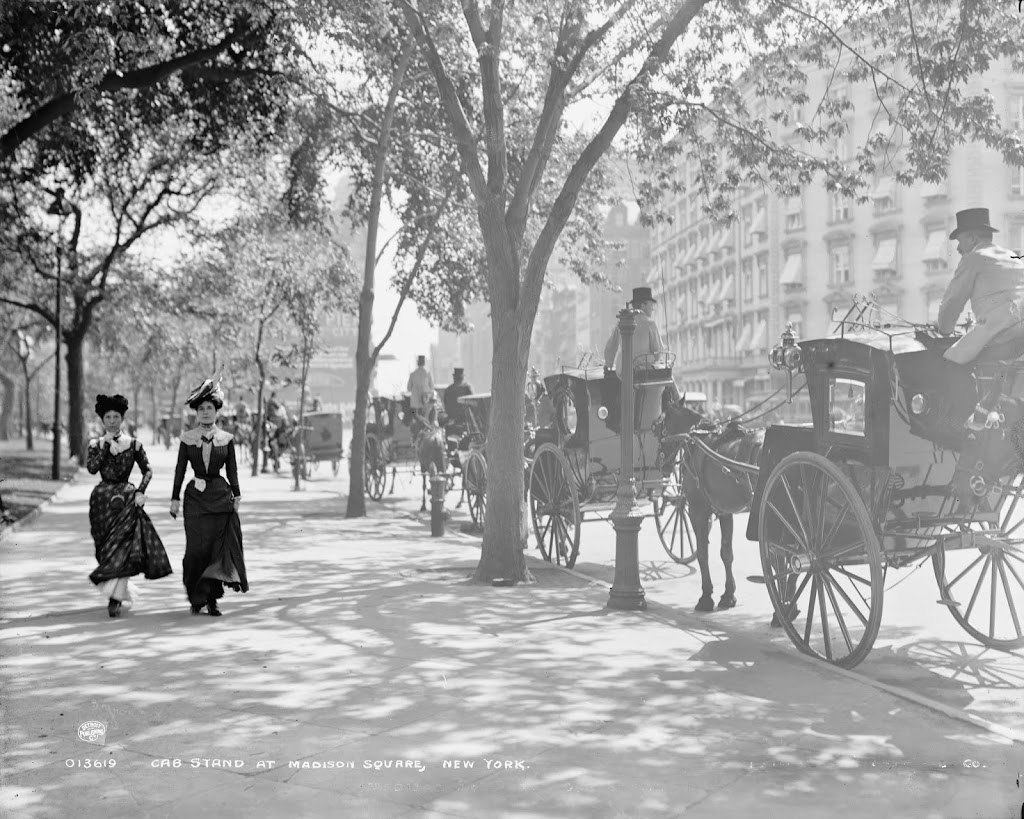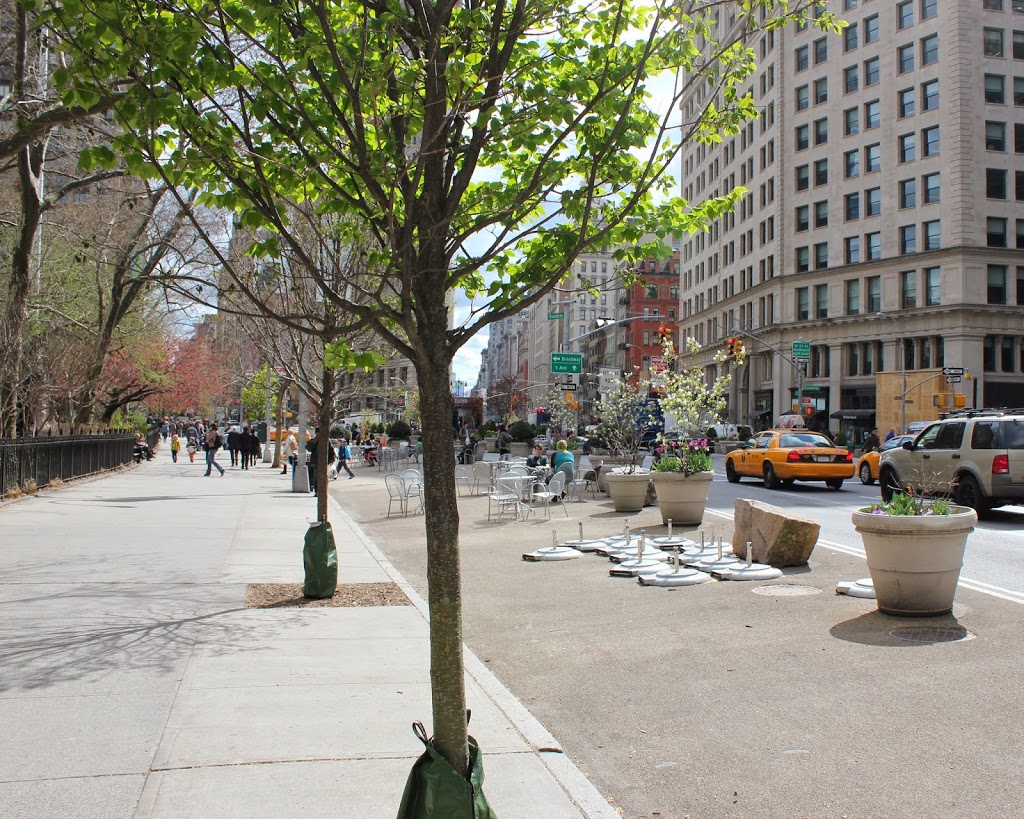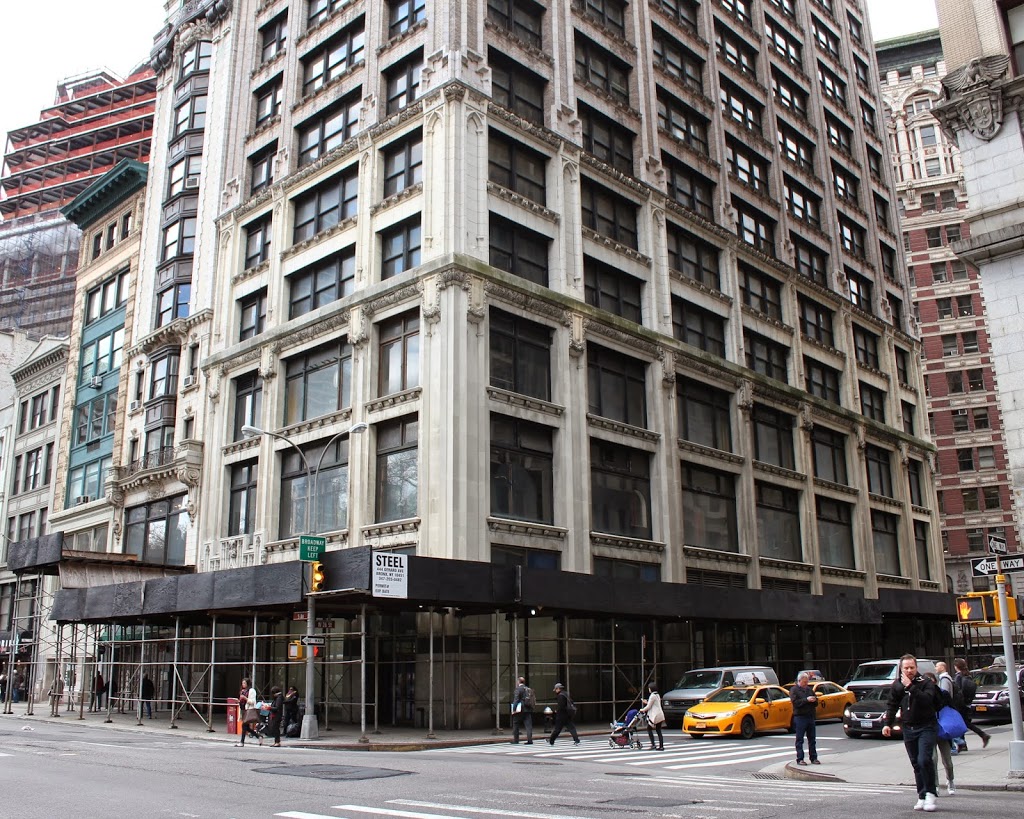The Metropolitan Life Insurance Company Tower, between 1909 and 1915. Image courtesy of the Library of Congress, Detroit Publishing Company Collection.
The same building in 2014:
Completed in 1909, the Metropolitan Life Insurance Company Tower was the tallest building in the world until the completion of the Woolworth Building in 1913. It was the company’s headquarters until 2005, and the tower portion is now being converted into a hotel. At the base of the tower in the first photo, to the right, is the original office building, which built in 1893 and replaced by the current one in the 1950s.

